8 Bugs That Look Like Bed Bugs
By:
Updated:
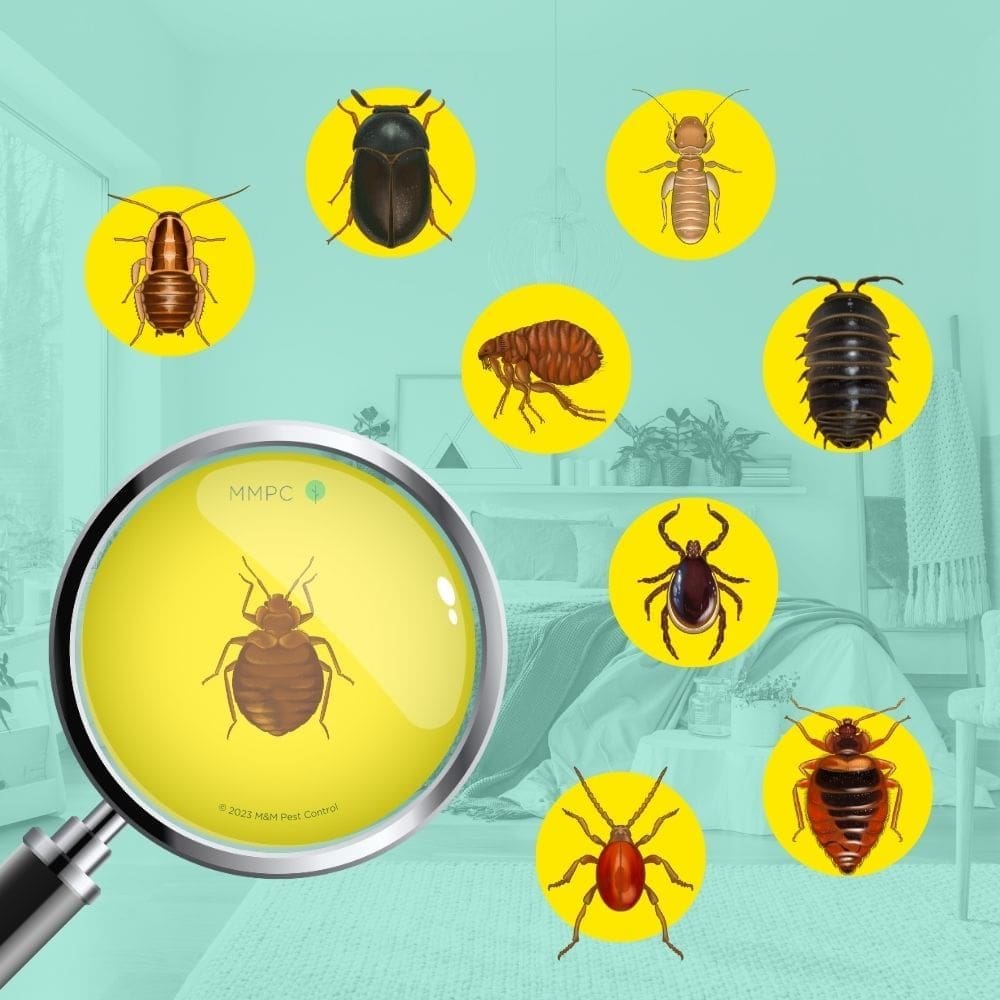

Found a suspicious bug in your home that looks like a bed bug? Before you panic, here are 8 other common household pests that it could be.
What Do Bed Bugs Look Like?
Bed bugs are reddish-brown insects around the size of a flaxseed or small apple seed. They have six thin legs and a flat, oval-shaped abdomen that swells in size after feeding on blood.
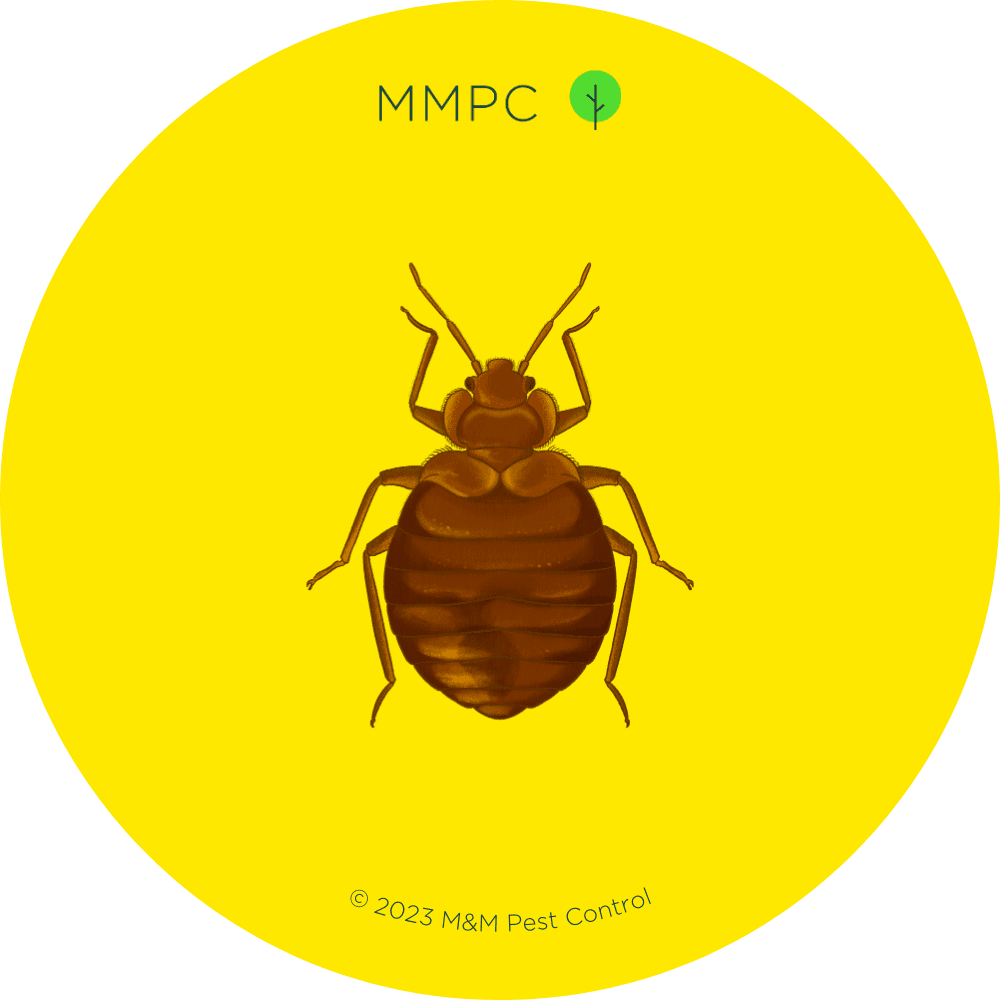
Size: 1/6″ – 1/4″ (4 – 7 mm) long
Color: Mahogany to red-brown
Identifying Features:
- Short, thin antennae with 4 segments
- Small, beady eyes protruding on each side of the head
- Squarish, protruding mouthparts
- Flat, broad abdomen with 8 horizontal grooves
- Wide dorsal plate (pronotum) that flares outwards


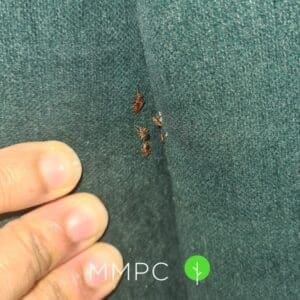
Bugs That Look Like Bed Bugs
Bed bugs are notoriously difficult to eliminate, and the damage they cause can range from itchy bites to psychological distress. However, not every tiny reddish-brown insect is a bed bug. Before taking any drastic actions (like this), take a deep breath and carefully check if the bug you found is really a bed bug.
Here are 8 other household bugs that look like bed bugs in terms of size, shape, and color:
1. Baby Cockroaches
Baby cockroaches, or cockroach nymphs, are the immature stage of cockroaches and can be mistaken for bed bugs due to their similar size and appearance. They are typically found in warm, dark, and moist environments, such as under sinks or behind appliances.
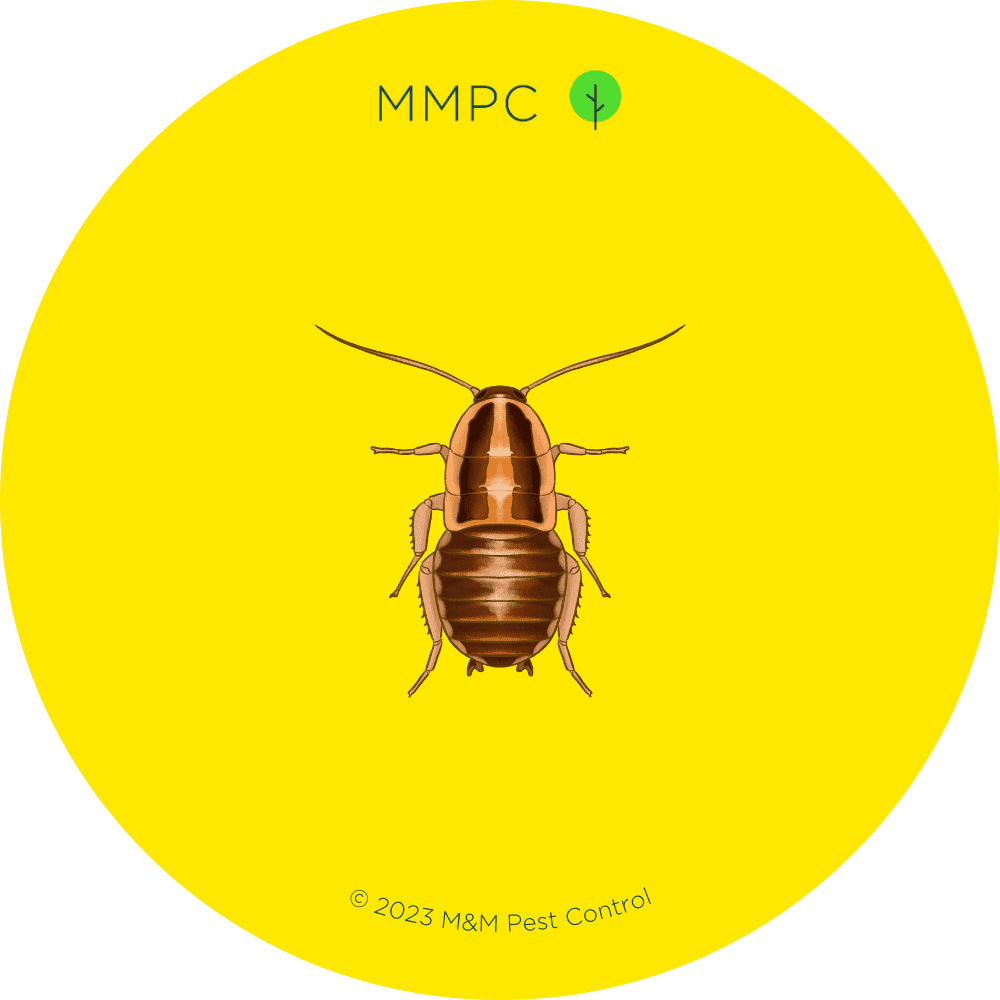
At a Glance: Baby Cockroaches vs Bed Bugs



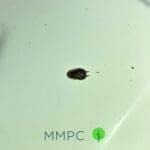
Newly hatched cockroach nymphs can be as small as 3 millimeters,1 and their color varies from pale to dark brown. Like bed bugs, cockroach nymphs are wingless. Both are small and oval-shaped. However, cockroach nymphs tend to be more cylindrical, while bed bugs are flatter and seed-shaped.
Under a Microscope: Baby Cockroaches vs Bed Bugs


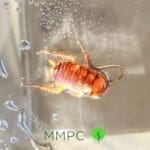
- Cockroaches have flexible, thread-like antennae that are often longer than their bodies, while bed bugs have short, segmented antennae.
- Cockroach legs are long and spiny, while bed bug legs are thin and without spines.
- Cockroaches have a pair of short sensory appendages called cerci extending from the rear.
- Cockroach eyes are large and kidney-shaped, covering most of the head, while bed bugs have beady, protruding eyes.
Should You Be Concerned?
Cockroaches can spread pathogens, contaminate food, and may trigger allergies and asthma. As prolific breeders, they rapidly increase in population when left unchecked. Finding nymphs in your home is usually a sign of a larger infestation.
Proper cleaning, sanitation, and sealing entry points are crucial steps in addressing cockroach issues. This includes cleaning up spills, properly storing food, and reducing clutter to limit moisture and food sources. You can also stop them from getting inside by finding and sealing entry points, such as cracks and gaps under door frames, behind appliances, and around plumbing lines.
2. Carpet Beetles
Carpet beetles are another common household bug that looks like bed bugs. These small beetles usually live outside but can sometimes enter homes, where their larvae feed on carpets, clothing, and other animal-based materials.
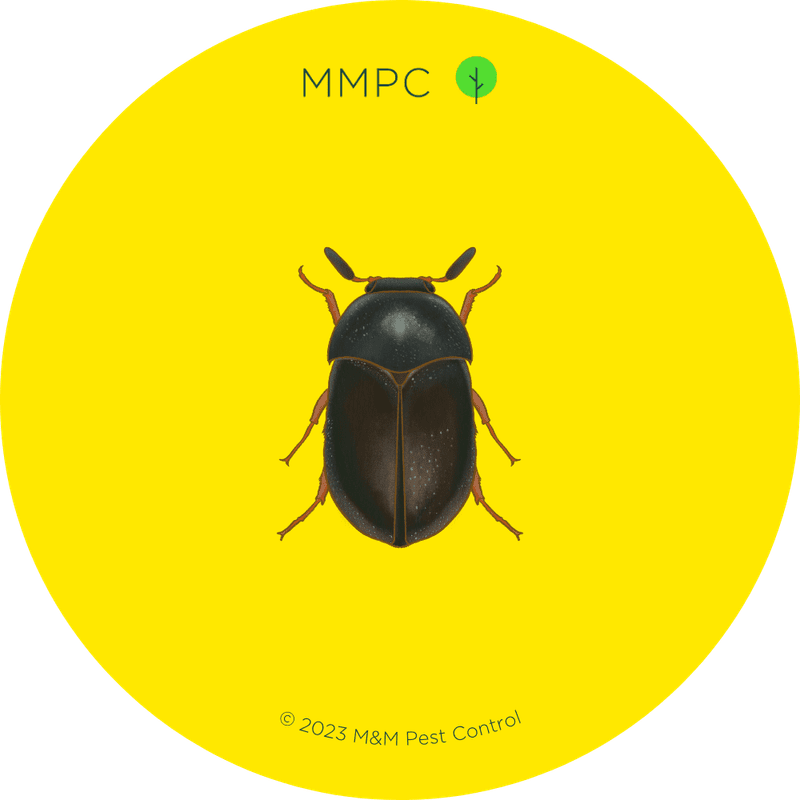
At a Glance: Carpet Beetles vs Bed Bugs
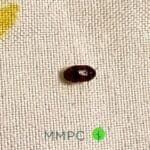
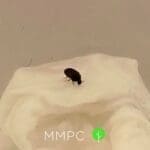
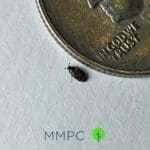

Carpet beetles have large, oval-shaped bodies and small heads. They are typically around 2–5 millimeters long. Varied and furniture carpet beetles have a mottled pattern of white, brown, and yellow, making them easy to distinguish from bed bugs. Black carpet beetles are harder to tell apart due to their solid brown color and similar shape, but they are more rounded and have a hard shell characteristic of beetles.
Adult carpet beetles are attracted to light and are usually seen near windowsills or outdoors. It’s unusual to find them around your bed unless it’s right underneath or next to a window.
Under a Microscope: Carpet Beetles vs Bed Bugs
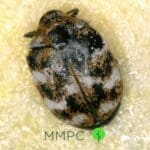
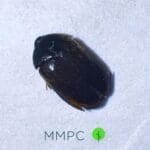
- Carpet beetles have two large wing covers called elytra, while bed bugs do not.
- Carpet beetles have short, stubby antennae, while bed bugs have longer, segmented antennae.
- Compared to bed bugs, carpet beetles have shorter legs that get tucked under their bodies when disturbed.2
Should You Be Concerned?
Adult carpet beetles are harmless and mainly feed on pollen. However, their larvae are problematic because they love to feed on natural fibers found in carpets, clothing, and upholstered furniture.
Carpet beetle larvae look like fuzzy little caterpillars (they’re covered in hairs and bristles called setae). In addition to the damage they cause, prolonged exposure to hairs they drop may cause an allergic reaction called carpet beetle dermatitis.
3. Spider Beetles
Spider beetles are small, bulbous beetles that resemble spiders due to their long legs. They are often found in dark, moist places and can be mistaken for bed bugs because of their reddish-brown color and oval bodies.
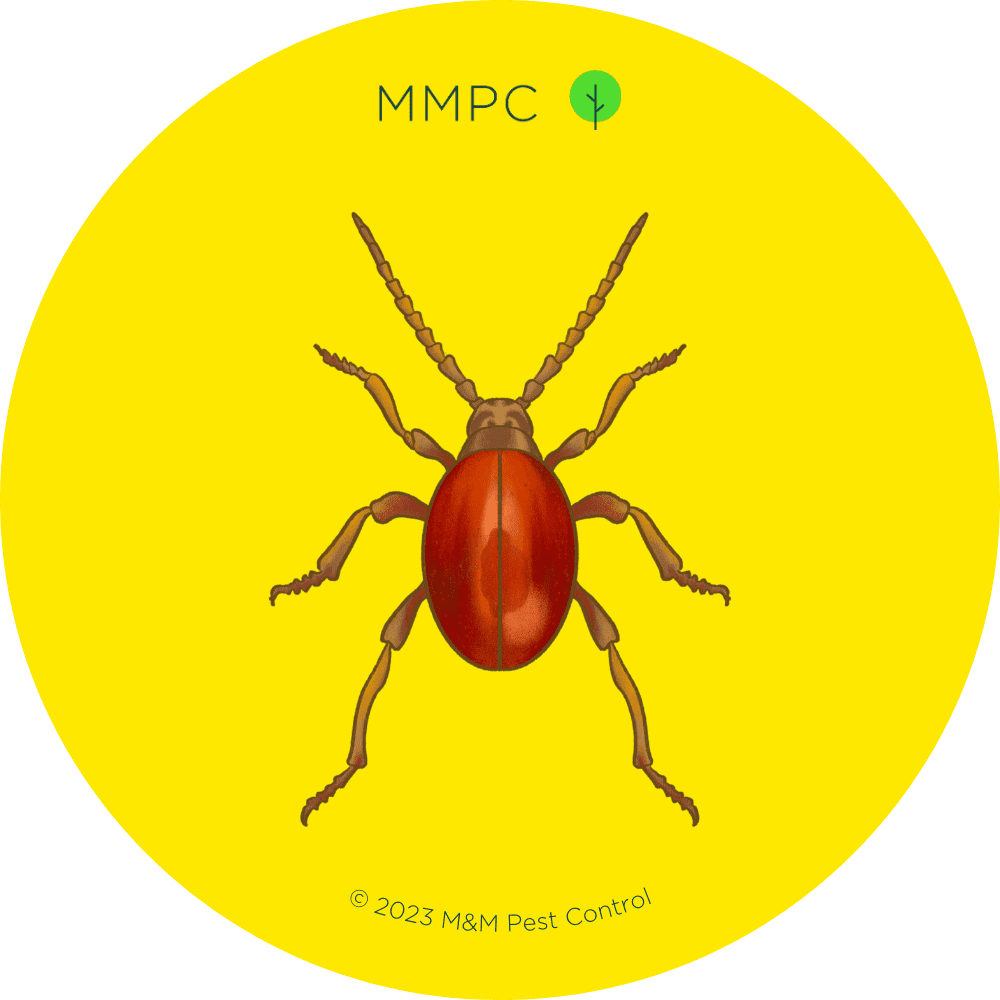
At a Glance: Spider Beetles vs Bed Bugs
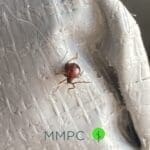

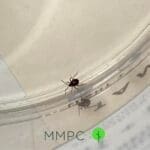

Spider beetles are smaller than bed bugs, measuring 1.5–3.5 millimeters. Their abdomens are round and globular, whereas bed bug abdomens are typically flat and wide.
Even when a bed bug becomes engorged (after a blood meal), its abdomen becomes elongated and football-shaped, not round like that of a spider beetle.
Under a Microscope: Spider Beetles vs Bed Bugs
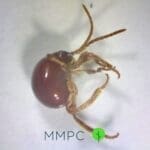
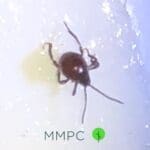
- Spider beetles have shiny, fused elytra, which are incapable of flight.
- Spider beetles have long antennae that are almost the same length as their bodies.
- Spider beetles are covered in tiny, pale-yellow hairs, which bed bugs lack.
Should You Be Concerned?
Spider beetles are scavengers that feed on wool, fabrics, and food products. While they don’t pose a direct health threat, they can contaminate grains, dried fruits, and other stored foods.
If you see these pests in your home, we recommend inspecting your pantry for potential infestations. Regular cleaning and vacuuming can also help reduce their population.
4. Fleas
Fleas are tiny, reddish-brown ectoparasites that feed on blood. Infestations often begin when a dog or cat brings fleas inside the home.
While their preferred hosts are furry pets, fleas will also bite humans. This causes people to mistake them for bed bugs, because both are small, reddish-brown, wingless insects that leave behind red, itchy bites.
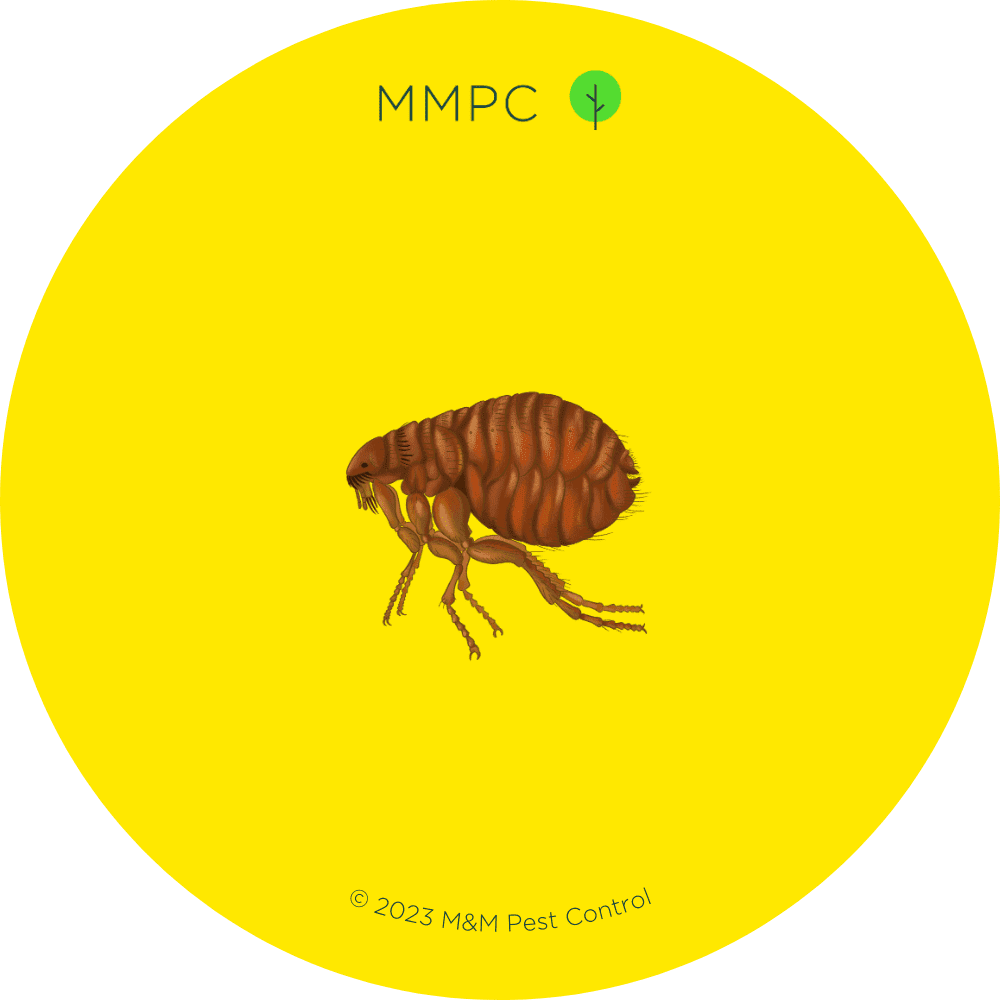
At a Glance: Fleas vs Bed Bugs

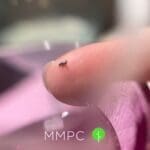
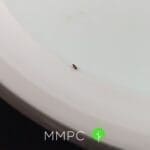
In terms of size, fleas are much smaller than bed bugs. They typically measure only 1.5–3 millimeters in length, which is about the size of a sesame seed.
Their bodies are vertically flattened, allowing them to navigate through fur, whereas bed bugs are flat dorsal-ventrally, meaning they lay flat on their stomachs. If you find a small, dead bug that’s laying on its side, then it’s most likely a flea and not a bed bug.
Under a Microscope: Fleas vs Bed Bugs
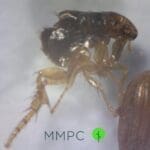
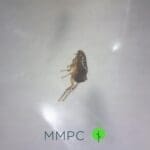
- Fleas have long, spiny legs, which you don’t see on bed bugs. Their powerful hind legs are noticeably longer than the rest, giving fleas the ability to jump up over 200 times their body length.3
- Fleas have small, sloping heads with piercing-sucking mouthparts and 2 characteristic rows of spines called the genal comb and the pronotal comb.
- Flea antennae are not visible to the naked eye.
Should You Be Concerned?
Fleas can cause a wide range of health issues for both pets and humans, such as tapeworms, flea allergy dermatitis (FAD), and anemia. Their itchy bites can also lead to secondary skin irritations and infections due to excessive scratching.
If you’ve found fleas in your home, you should thoroughly wash infested pet bedding and vacuum carpets, rugs, and furniture in suspected areas.
5. Ticks
Ticks and bed bugs share some similarities, including their flat, wingless, oval-shaped bodies. However, ticks are arachnids and have eight legs, while bed bugs have six.
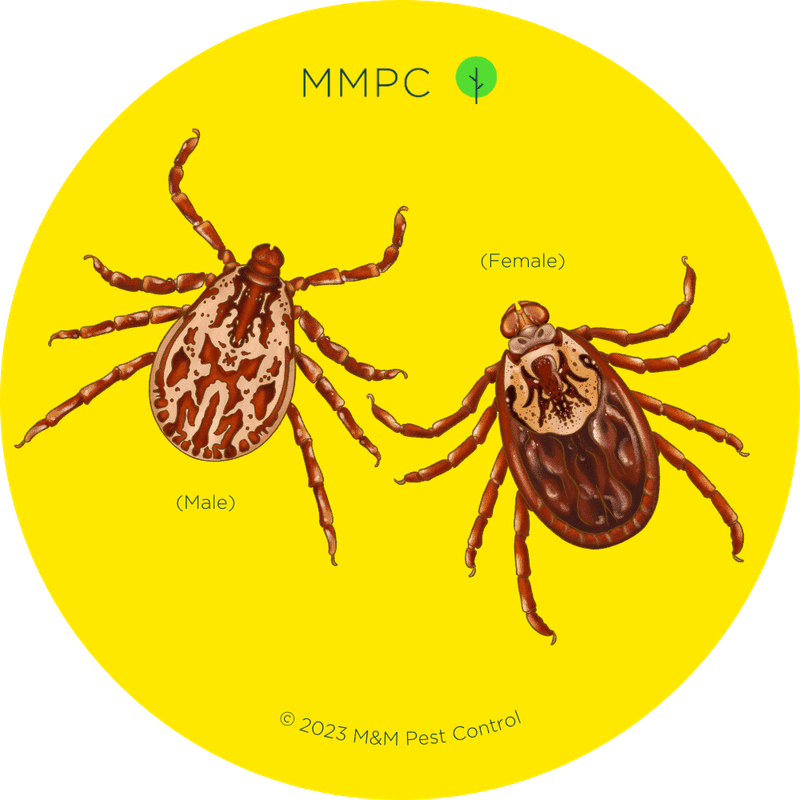
At a Glance: Ticks vs Bed Bugs
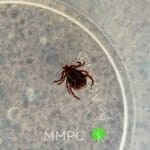

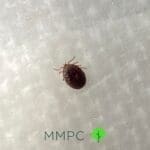
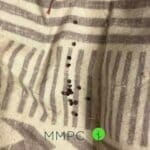
Prior to feeding, ticks are usually only 1–5 millimeters long, depending on the species. Like bed bugs, their bodies expand quite a bit after a blood meal. However, a fed tick takes on a round, bulbous shape while a bed bug takes on an elongated, football shape.
Another distinguishing feature of adult ticks is that they have 8 legs, not 6. That’s because ticks aren’t actually insects—they’re actually arachnids, and are related to spiders and scorpions. Baby ticks actually also have 6 legs (they grow the last pair once they reach adulthood), but they’re way smaller than bed bugs and are about the size of a poppy seed.
Under a Microscope: Ticks vs Bed Bugs
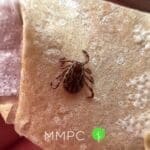

- Ticks have 8 legs, while bed bugs have 6.
- Ticks lack antennae.
- Ticks have a two-part body, consisting of a capitulum (head) and idiosoma (body).
- Hard ticks have a plate-like structure on their back called a scutum, which often contains unique markings and features used to identify different species.
Should You Be Concerned?
While bed bugs don’t transmit diseases through their bites, ticks do. They are vectors for diseases like Lyme and Rocky Mountain Spotted Fever. If you find ticks, it’s important to address both the tick infestation and any potential risk from associated diseases.
6. Booklice
Booklice are small, soft-bodied insects that can sometimes be mistaken for baby bed bugs due to their size and shape.
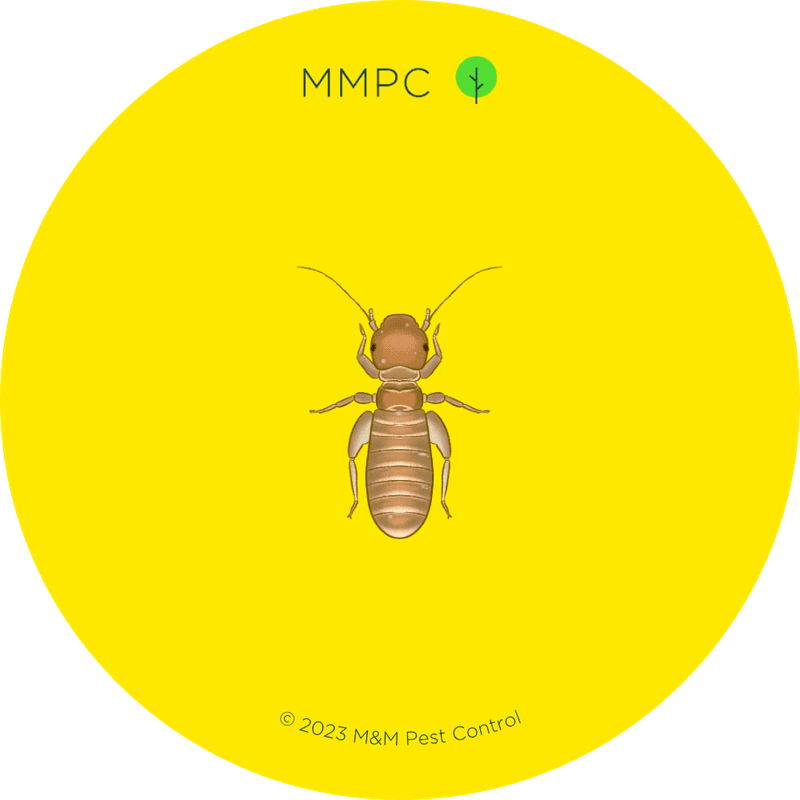
At a Glance: Booklice vs Bed Bugs
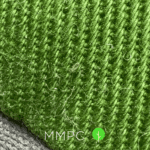
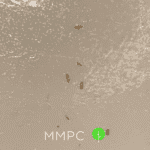
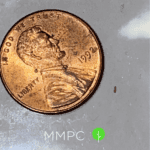
Booklice have slender, elongated bodies measuring between 1–2 millimeters long, and are whitish-yellow or tan in color. Bed bug nymphs, on the other hand, have flat bodies resembling small seeds.
Under a Microscope: Booklice vs Bed Bugs
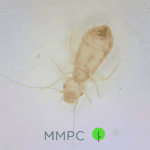
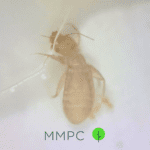
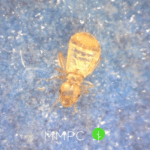
- Booklice have long, threadlike antennae, while bed bugs have short, segmented antennae.
- At the front of their the heads, booklice have a large and smooth bulge called the clypeus, which is their upper lip.
- Compared to bed bugs, booklice have longer legs. The hind pair appears extra thick with enlarged femora.
Should You Be Concerned?
Booklice do not bite and are generally harmless. They like to feed on mold, so their presence may indicate a moisture issue in your home. They also feed on starchy material like the glue in book bindings, hence the name “booklice.”
7. Pill Bugs and Sow Bugs
Pill bugs and sow bugs are terrestrial isopods often referred to as woodlice or roly-polies. Certain species may appear similar to bed bugs in terms of their size, color, and shape. They normally live outdoors in damp environments with lots of soil and vegetation, but can occasionally make their way indoors.
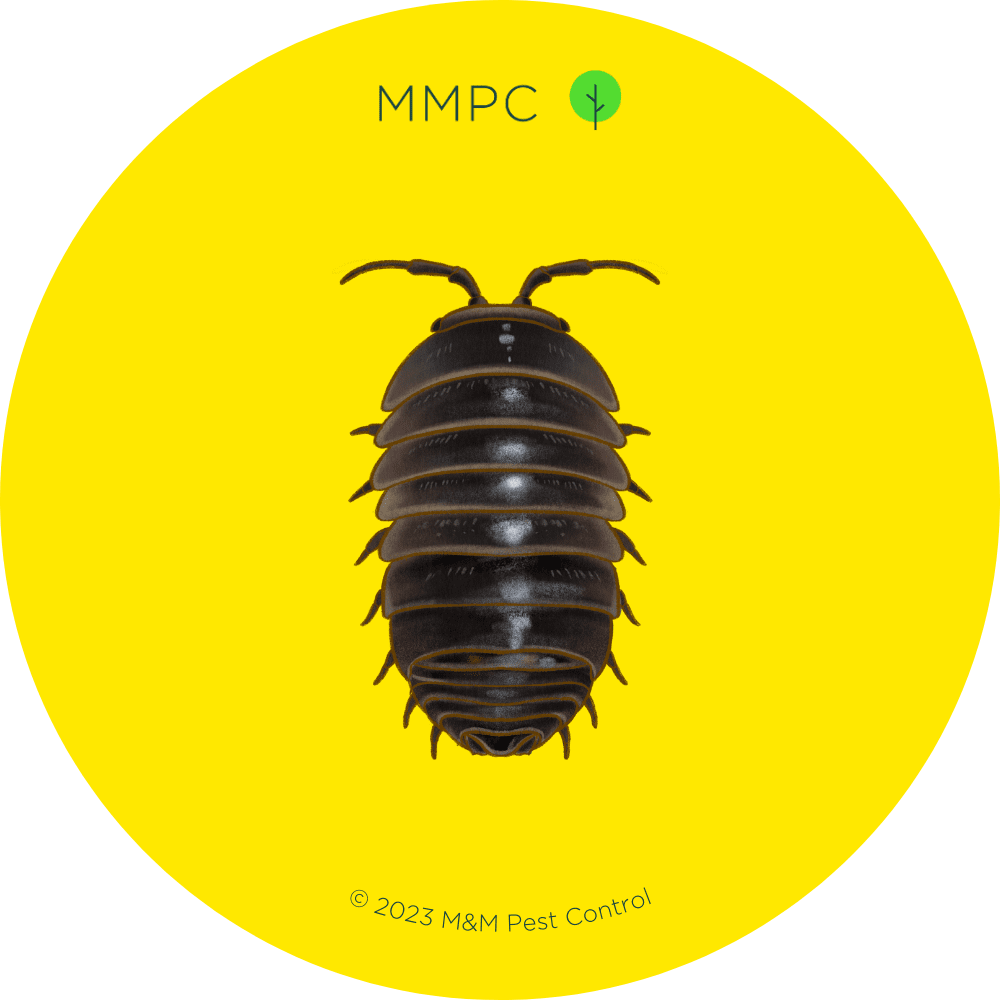
At a Glance: Pill Bugs vs Bed Bugs

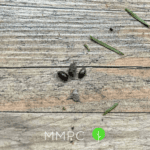
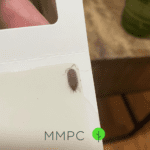

Pill bugs and sow bugs aren’t actually insects—they’re crustaceans. As such, they have way more legs than bed bug do (14, in fact).
And while bed bugs are flat and soft-bodied, pill bugs and sow bugs have hard, dome-shaped exoskeletons with many overlapping plates. When threatened, pill bugs can roll up their bodies into tight balls.
Under a Microscope: Pill Bugs vs Bed Bugs
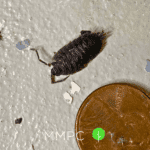
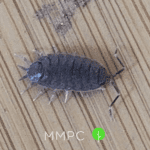
- Pill bugs and sow bugs have 14 legs (one pair on each of their 7 thoracic segments).
- Pill bugs have thick, segmented antennae, while bed bugs have short, thin antennae.
- Sow bugs have 2 additional tail-like appendages called uropods sticking out from the rear.
Should You Be Concerned?
Pill bugs and sow bugs are generally harmless and do not bite or transmit diseases. However, their presence might indicate moisture issues in your home.
8. Bat Bugs
Bat bugs (Cimex adjunctus) are close relatives of bed bugs (Cimex lectularius). Unlike bed bugs, which feed on human blood, bat bugs primarily feed on blood from bats. They are usually found in roosting areas, such as attics and chimneys.

At a Glance: Bat Bugs vs Bed Bugs
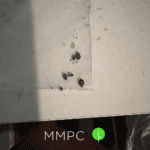
Bat bugs are slightly smaller than bed bugs, typically 4–5 millimeters long. Appearance-wise, they are nearly identical. This makes it difficult to distinguish them from bed bugs, even for many professionals.
Under a Microscope: Bat Bugs vs Bed Bugs
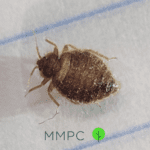

- Bat bugs have longer and denser hairs (setae) around the pronotum and abdomen.
- Compared to bed bugs, the front edge of the pronotum is slightly less concave.4
- Compared to bed bugs, their wing pads are slightly broader.5
Should You Be Concerned?
Bat bugs can migrate from bat roosts into human living spaces, where they can bite humans. While they don’t transmit any diseases, their bites cause irritation and discomfort similar to bed bug bites. Seeing bat bugs also indicates the presence of bats, which could pose additional health risks.
Need Help Identifying Bed Bugs?
Distinguishing bed bugs from other household pests can be challenging, especially when you’re already dealing with the stress of finding bugs in your home.
MMPC is a NYC-based pest control company that provides reliable and eco-friendly pest solutions, including NESDCA-certified canine bed bug inspections and customized extermination services. If you’re still unsure whether the bug you’ve found is a bed bug, send a picture to our Free Pest ID Center and one of our experts will help you identify it and provide treatment recommendations.

About the Author
References
- German Cockroach. (n.d.). Field Guide to Common Texas Insects. https://texasinsects.tamu.edu/blattodea/german-cockroach/ ↩︎
- Liesch, P. (n.d.). Beetles Abound: A survey of beetles relevant to pest control professionals. UW Insect Diagnostic Lab. https://insectlab.russell.wisc.edu/wp-content/uploads/sites/253/2021/02/WPCA-2021-Beetles-Abound-Handouts.pdf ↩︎
- Alpert, G. (2015). Flightless Leaping Ectoparasitic Arthropods = FLEAs. New York State Integrated Pest Management – Cornell CALS. https://ecommons.cornell.edu/server/api/core/bitstreams/14ad6451-239b-4540-84fe-1cc038df319b/content ↩︎
- Pmalder. (2018, July 26). Featured insect: The bat bug. NC Urban Pests. https://ncurbanpests.wordpress.ncsu.edu/feature/2018/featured-insect-the-bat-bug/ ↩︎
- Cranshaw, W. S., & Ewals-Strain, B. (2022, October 5). Bed bug lookalikes – bat bugs and swallow bugs in Colorado – 5.625. Colorado State University Extension. https://extension.colostate.edu/topic-areas/insects/bed-bug-lookalikes-bat-bugs-and-swallow-bugs-in-colorado-5-625/ ↩︎


